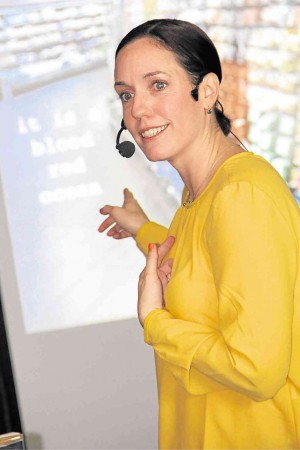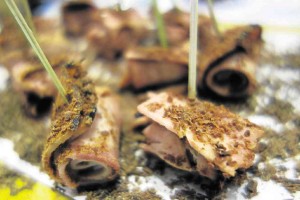Filipinos need to explore cacao’s potential as a major export commodity to points in North America and Europe, according to Alyssa Jade McDonald-Bartl, a social entrepreneur and founder of Blyss Chocolate.
“I am highly impressed with the cacao you grow here,” McDonald-Bartl recently told a group of Filipino cacao farmers, chefs, and culinary business experts.
She also mentioned how she was particularly struck by the way the stakeholders all worked together to maintain the industry’s high standards.
McDonald-Bartl is currently in the country for a series of speaking engagements.
Origins
McDonald-Bartl grew up in a family of social entrepreneurs who raised cattle in the wild hills, and cared for the rubber forests of Papua New Guinea. Her mother is from Australia.
McDonald-Bartl is now based in Germany and gets to visit Australia from time to time.
She decided to leave her corporate job and took up what her family did best—farming.
Before she started the business, McDonald-Bartl asked her father to find her the best cacao bean. What he found was Arriba Nacionale in Ecuador.
McDonald-Bartl wasn’t successful at first, but she persisted. In time, she was able to position Blyss’ beans as a premium brand used in the most exclusive hotels and restaurants around the world.
“I sell only beans now. We already sold seven tons before the year,” she said, describing the beans as perfect.
The best cacao variety
McDonald-Bartl told the local cacao growers that the Philippines has one of the best bean varieties in the world—the “Criollo.”
Originally from Mexico, the bean took root in the country. But even though the Criollo here is considered to be of high quality, only a handful of Filipino farmers get to produce the local variety.
It was reported that most farmers in the country refused to grow Criollo because it was a sensitive variety and entailed a lot of work.
“We can either agree that this is worth the time and effort, or we can just use the big growing varieties,” McDonald-Bartl said.
Winemakers, she added, “celebrate the amount of work, and they celebrate the artisanship.”
Cacao farmers and growers can look into that and market the beans or chocolates like wine, she explained.
Believing that commercial standards of environmental and social care in business must be improved, McDonald-Bartl went on to urge farmers and growers to take advantage of the honesty and purity of the local beans.
“When I visit chefs, I don’t even use packaging,” she said. “I have a clear glass of beans and I hand it over.”
She did so because she wanted them to experience the cacao in its purest form.
Beyond pastries
“Why are we selling just to the pastry division [of hotels]? We can get our products sold more than once,” McDonald-Bartl explained.
More products can be produced using chocolates, apart from sweets and desserts. For one, the cosmetics industry is cashing in on cacao butter.
McDonald-Bartl also said that other areas of the culinary industry could benefit from the beans.
“Cacao butter doesn’t burn,” she said, “compared with other forms of oil or butter.”
To illustrate, McDonald-Bartl showed to those gathered around her a pan-seared steak cooked using her brand of cacao butter. The steak is part of a menu being marketed by a hotel chain.
“Can you see melted chocolate there?” she asked the audience.
There was no melted chocolate. But on the menu, her brand was listed alongside the steak, indicating that the meat was cooked with Blyss Chocolate cacao butter.
There are other markets to explore and trends to tap, she encouraged her listeners, citing such trends as halal, kosher, raw and vegan.
Products that bear these “stamps” are assured of a market.
“The more gorgeous we keep our quality, the easier it is to meet any single trend that’s going on,” she says.
Branding
When farmers sell their cacao to food manufacturing companies or restaurants and hotels, the end products will carry only the brand stamped by manufacturers. In most cases, where the cacao came from was a detail that would never see the light of day.
“If my brand and name are going to be on the menu, I want it to represent what I’m standing for,” McDonald-Bartl said. “We have to be demanding.”
Taking care of the product doesn’t stop when it gets sold.
“If I walk into a kitchen and I see my bag ‘oxidating,’ I take it off the shelf,” McDonald-Bartl says. “You just killed my product. We must teach them how to take care of the product.”
McDonald-Bartl was invited by restaurant chain The Cravings Group as part of a course offering that highlighted chocolates.
The Blyss Chocolate owner will visit the country at least four times a year to personally facilitate the course, said Marinela Guerrero-Trinidad of The Cravings Group.



